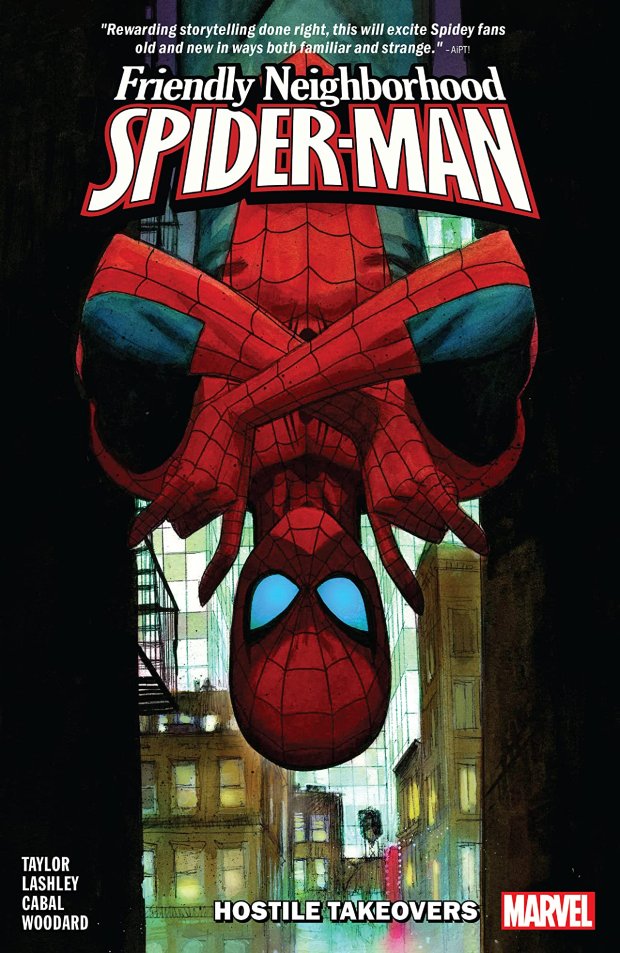by Tom Taylor, Ken Lashley, Juann Cabal, Scott Hanna, Scott Hanna, Nolan Woodard, Rachelle Rosenberg, Marcio Menyz
also featuring artists Luca Maresca, Pere Pérez, Todd Nauck, Ig Guara, Dike Ruan, Marguerite Sauvage
collects Friendly Neighborhood Spider-Man #7-14
volume reviews one | two [complete]
It’s criminal that Marvel cancelled Taylor’s Spider-Man series after only two volumes. I’ve yet to find a more consistent author who strikes the perfect balance of Peter’s snarky one-liners and his deep love for the people of New York.
Unfortunately, both stories felt like trade-volume arcs stuffed into a few issues – a problem I attribute to Marvel, not Taylor, who had to wrap up all of his plans far too soon. The first arc is earnest, and some might say “political,” but it’s a clear extension of Peter’s values that the government should work for everyone and provide basic necessities. It’s a storyline that has echoes of comics from the 60’s, including Spider-Man’s, that isn’t afraid to bridge comics with our own need for equity today. (For more about how politics have existed in comics since the beginning, see here.) Marnie returns, and it was phenomenal to see her origin as Rumor include the history of WWII internment camps for Japanese Americans. The second story sees Spidey teaming up with the Fantastic Four and returning to Under York, a place I couldn’t care less about – the story was rushed and had no payoff, but Peter’s banter with the team was so fantastic, I could have read a whole volume of it.
Taylor writes an excellent Peter Parker, but the book isn’t without its issues. Issue 11 is a standalone, and stand out, issue featuring Mary Jane; but otherwise, MJ and Aunt May are still in the background, continuing to only serve Peter and his story, and not have any character development on their own. (Half of MJ’s issue is even narrated by an absent Peter.) It’s less forgivable this time around as May opens a homeless shelter while having cancer. Speaking of senior women, it’s strange that there’s time spent on Marnie’s backstory, but no interesting or emotional development with May at all. Taylor had to pick and choose what made it in these final issues, but as much as I love Marnie, giving May some very past-due focus might have been more important. Even the final issue, a heartwarming though rushed story where New York’s superheroes give Peter the night off as he stays with May during her surgery, still uses May’s cancer as an impetus for Peter’s story.
The art is also a major problem. The revolving door of artists both during and between issues, was jolting and aside from one flashback didn’t add to the story at all. Aside from Juann Cabal and Pere Pérez, the art wasn’t particularly inspiring either. I really struggled with Lashley’s work and many panels, by him and other artists, felt sloppy and rushed.
And for a book with double the senior women usually found in comic books, the way they are treated visually in this book is horrible. Marnie has excessive wrinkles and lines you’d never see on Lex Luthor or Magneto. And I was honestly offended by Lashley’s final page when May wakes up from her surgery. With her face gaunt and eyes blackened, it looked more like a villain reveal than a genuine and vulnerable moment between May and Peter.
I wish Taylor had more time (with better artists) to give his Spidey stories more justice, because there were some real home runs in this series. Hopefully he’ll write more Spider-Man in the future – or even better, a Spidey/F4 book.

One comment